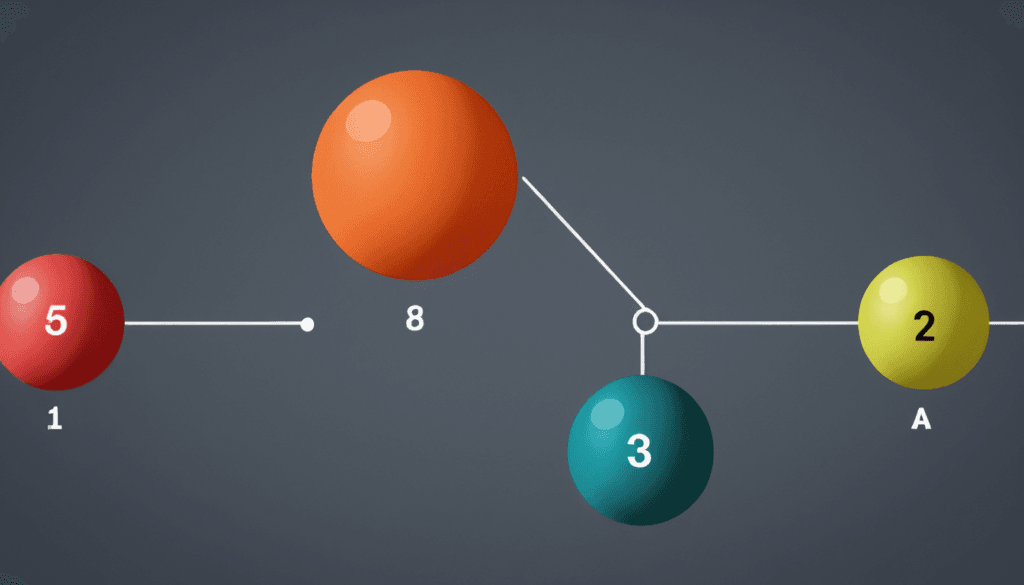Sorting is one of the most fundamental tasks in computer science, and it’s everywhere—whether you’re organizing a list of names, ranking search results, or processing financial data. But here’s the problem: not all sorting algorithms are created equal. Some perform well with small datasets but struggle with larger ones, while others are efficient but unpredictable. This inconsistency can lead to performance bottlenecks, especially when dealing with massive amounts of data.
Enter Merge Sort, a reliable and efficient sorting algorithm that consistently delivers O(n log n) performance, regardless of the input. But what makes Merge Sort stand out? Why should you care about its time complexity? And how does it solve the problem of unpredictable sorting performance?
In this blog, we’ll break down the time complexity of Merge Sort in its best, worst, and average cases. We’ll explore why it’s a go-to choice for developers and how its predictable performance makes it ideal for real-world applications. Whether you’re a beginner or an experienced programmer, understanding Merge Sort’s efficiency will help you tackle sorting challenges with confidence
Breaking Down Time Complexity
Time complexity is a way to measure how efficient an algorithm is. It tells us how the runtime of an algorithm grows as the input size increases. For sorting algorithms like Merge Sort, understanding time complexity helps us predict performance in different scenarios.
Merge Sort is a divide-and-conquer algorithm. It splits the input array into smaller parts, sorts them, and then merges them back together. This approach makes it highly efficient, but its performance varies depending on the input. Let’s explore its time complexity in best-case, worst-case, and average-case scenarios.
Best Case Time Complexity of Merge Sort
In the best-case scenario, Merge Sort performs exceptionally well. The best case occurs when the input array is already sorted. However, unlike algorithms like Insertion Sort, Merge Sort doesn’t take shortcuts. It still divides the array into smaller parts and merges them, even if the array is already sorted.
The time complexity of Merge Sort in the best case is O(n log n).
- Divide Step: The array is split into halves repeatedly until each subarray has one element. This takes log n steps.
- Merge Step: Merging two sorted subarrays takes O(n) time.
Even in the best case, Merge Sort doesn’t improve beyond O(n log n). This might seem like a drawback, but it ensures consistent performance, which is a big advantage in many applications.
For example, imagine you’re sorting a list of student grades that’s already in order. Merge Sort will still perform all its steps, but it will do so efficiently. If you’re curious about how other algorithms like Insertion Sort perform in their best-case scenarios, check out this detailed explanation.
Worst Case Time Complexity of Merge Sort
The worst-case scenario for Merge Sort is when the input array is in reverse order. Surprisingly, Merge Sort handles this situation just as well as the best case. Its time complexity remains O(n log n).
Here’s how it works:
- Divide Step: The array is split into halves, taking log n steps.
- Merge Step: Merging two subarrays, even if they’re in reverse order, still takes O(n) time.
This consistency is what makes Merge Sort a reliable choice. Unlike Quick Sort, which can degrade to O(n²) in the worst case, Merge Sort maintains its efficiency.
For instance, if you’re sorting a list of products by price in descending order, Merge Sort will handle it just as efficiently as an already sorted list. To learn more about how Merge Sort compares to other algorithms, you can explore this algorithm breakdown.
Average Case Time Complexity of Merge Sort
In the average-case scenario, Merge Sort also performs with a time complexity of O(n log n). This is because the algorithm’s behavior doesn’t depend on the initial order of the input. Whether the array is random, partially sorted, or completely unsorted, Merge Sort follows the same steps.
Here’s a breakdown:
- Divide Step: Always takes log n steps.
- Merge Step: Always takes O(n) time.
This predictability is a major advantage. For example, if you’re sorting a large dataset of user-generated content, Merge Sort will consistently deliver efficient results, regardless of how the data is organized. For a deeper dive into sorting algorithms, check out this guide on Heap Sort.
Why Merge Sort Consistently Performs Well
Merge Sort’s consistent performance stems from its divide-and-conquer approach. By splitting the problem into smaller, manageable parts, it ensures that the algorithm remains efficient across all scenarios. Here are some key reasons why Merge Sort shines:
- Stable Sorting: Merge Sort preserves the relative order of equal elements, making it ideal for sorting objects with multiple attributes.
- Parallelizable: The divide step allows Merge Sort to be easily parallelized, making it suitable for modern multi-core processors.
- Predictable Performance: Unlike other algorithms, Merge Sort doesn’t rely on luck or input order. It always performs at O(n log n).
For example, in real-world applications like sorting large databases or processing financial transactions, Merge Sort’s reliability is a huge advantage. To see how Merge Sort compares to other algorithms like Quick Sort, check out this Quick Sort complexity analysis.
Practical Implications of Merge Sort’s Time Complexity
Understanding Merge Sort’s time complexity helps us decide when to use it. Here are some practical implications:
- Large Datasets: Merge Sort is ideal for sorting large datasets because of its O(n log n) efficiency.
- External Sorting: Merge Sort is often used in external sorting, where data doesn’t fit into memory. It efficiently handles data stored on disks or distributed systems.
- Stability Matters: If you need a stable sort (e.g., sorting by multiple criteria), Merge Sort is a great choice.
For instance, companies like Google and Amazon use Merge Sort for sorting massive amounts of data in their backend systems. Its predictable performance ensures smooth operations even under heavy loads. To learn more about how sorting algorithms are applied in real-world scenarios, check out this article on Bubble Sort.
Conclusion
Merge Sort is a powerful and reliable sorting algorithm. Its O(n log n) time complexity in the best, worst, and average cases makes it a go-to choice for many applications. Whether you’re sorting a small list or processing terabytes of data, Merge Sort delivers consistent and efficient results.
By understanding its time complexity, you can make informed decisions about when to use Merge Sort. Its stability, predictability, and efficiency make it a valuable tool in any programmer’s toolkit. So, the next time you’re faced with a sorting problem, consider Merge Sort—it might just be the perfect solution. For a step-by-step explanation of Merge Sort, check out this detailed guide.









